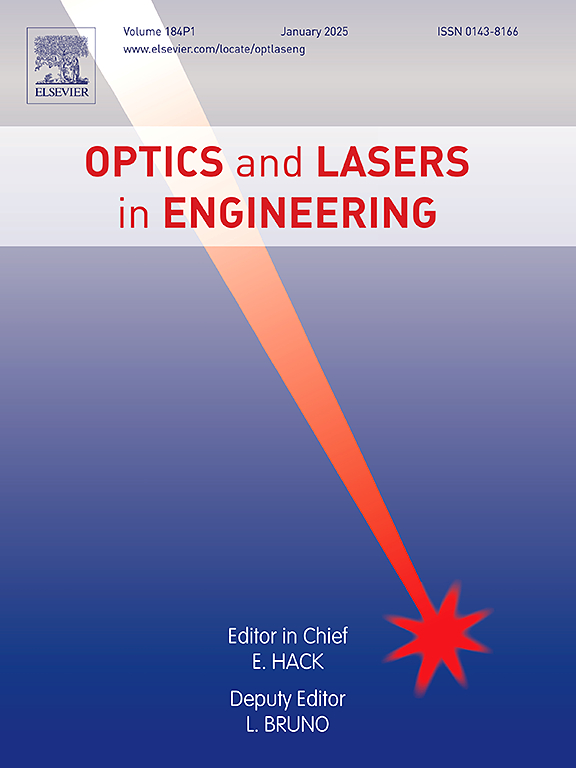Pixel super-resolution using compressive sensing for interferometric quantitative phase imaging
IF 3.5
2区 工程技术
Q2 OPTICS
引用次数: 0
Abstract
Interferometric quantitative phase microscopy (iQPM) with high resolution holds great potential for efficient and label-free investigation of biological systems. However, due to the limited spatial bandwidth product, there is a trade-off between the field of view (FOV) and spatial resolution, which hinders the applications of iQPM for large-scale in situ cellular phenotyping. To address this issue, we developed CS-iQPM, a method applying compressive sensing to capture sub-pixel signals in an iQPM image. In CS-iQPM, we first propose an efficient and easy-to-implement frequency ordering sampling scheme to reorder the Hadamard basis, according to which the mask was selected. This scheme outperforms random sampling as evaluated by three key metrices: peak signal-to-noise ratio, root mean square error, and structural similarity. We second integrated the iterative hard thresholding algorithm with pseudo-inverse matrix to improve the efficiency and structural similarity of reconstruction. Applying these two techniques to our iQPM, the CS-iQPM enhanced the pixel resolution from about 4 pixel/μm2 using 10x objective lens to 64 pixel/μm2 within 2 s. Experimental results demonstrated that CS-iQPM significantly enhanced the resolution of fine grid patterns and cells in quantitative phase images with a range larger than 500 μm. We envision that CS-iQPM could be applied to many high-throughput in situ cellular phenotyping applications, such as measuring cellular morphologies or cellular mechanical properties at sub-single-cell level in a monolayer during cell migrating.
基于压缩感知的像素超分辨率干涉定量相位成像
高分辨率的干涉定量相显微镜(iQPM)在高效、无标记的生物系统研究中具有巨大的潜力。然而,由于有限的空间带宽乘积,在视场(FOV)和空间分辨率之间存在权衡,这阻碍了iQPM在大规模原位细胞表型分析中的应用。为了解决这个问题,我们开发了CS-iQPM,一种应用压缩感知来捕获iQPM图像中的亚像素信号的方法。在CS-iQPM中,我们首先提出了一种高效且易于实现的频率排序采样方案,对Hadamard基进行重新排序,并根据Hadamard基选择掩码。该方案优于随机抽样,通过三个关键指标进行评估:峰值信噪比、均方根误差和结构相似性。其次,我们将迭代硬阈值算法与伪逆矩阵相结合,提高了重构的效率和结构相似性。将这两种技术应用到我们的iQPM中,CS-iQPM在2 s内将像素分辨率从使用10倍物镜的4像素/μm2左右提高到64像素/μm2。实验结果表明,CS-iQPM在大于500 μm的定量相位图像中显著提高了精细网格图案和细胞的分辨率。我们设想CS-iQPM可以应用于许多高通量的原位细胞表型应用,例如在细胞迁移过程中在单层的亚单细胞水平上测量细胞形态或细胞力学特性。
本文章由计算机程序翻译,如有差异,请以英文原文为准。
求助全文
约1分钟内获得全文
求助全文
来源期刊

Optics and Lasers in Engineering
工程技术-光学
CiteScore
8.90
自引率
8.70%
发文量
384
审稿时长
42 days
期刊介绍:
Optics and Lasers in Engineering aims at providing an international forum for the interchange of information on the development of optical techniques and laser technology in engineering. Emphasis is placed on contributions targeted at the practical use of methods and devices, the development and enhancement of solutions and new theoretical concepts for experimental methods.
Optics and Lasers in Engineering reflects the main areas in which optical methods are being used and developed for an engineering environment. Manuscripts should offer clear evidence of novelty and significance. Papers focusing on parameter optimization or computational issues are not suitable. Similarly, papers focussed on an application rather than the optical method fall outside the journal''s scope. The scope of the journal is defined to include the following:
-Optical Metrology-
Optical Methods for 3D visualization and virtual engineering-
Optical Techniques for Microsystems-
Imaging, Microscopy and Adaptive Optics-
Computational Imaging-
Laser methods in manufacturing-
Integrated optical and photonic sensors-
Optics and Photonics in Life Science-
Hyperspectral and spectroscopic methods-
Infrared and Terahertz techniques
 求助内容:
求助内容: 应助结果提醒方式:
应助结果提醒方式:


